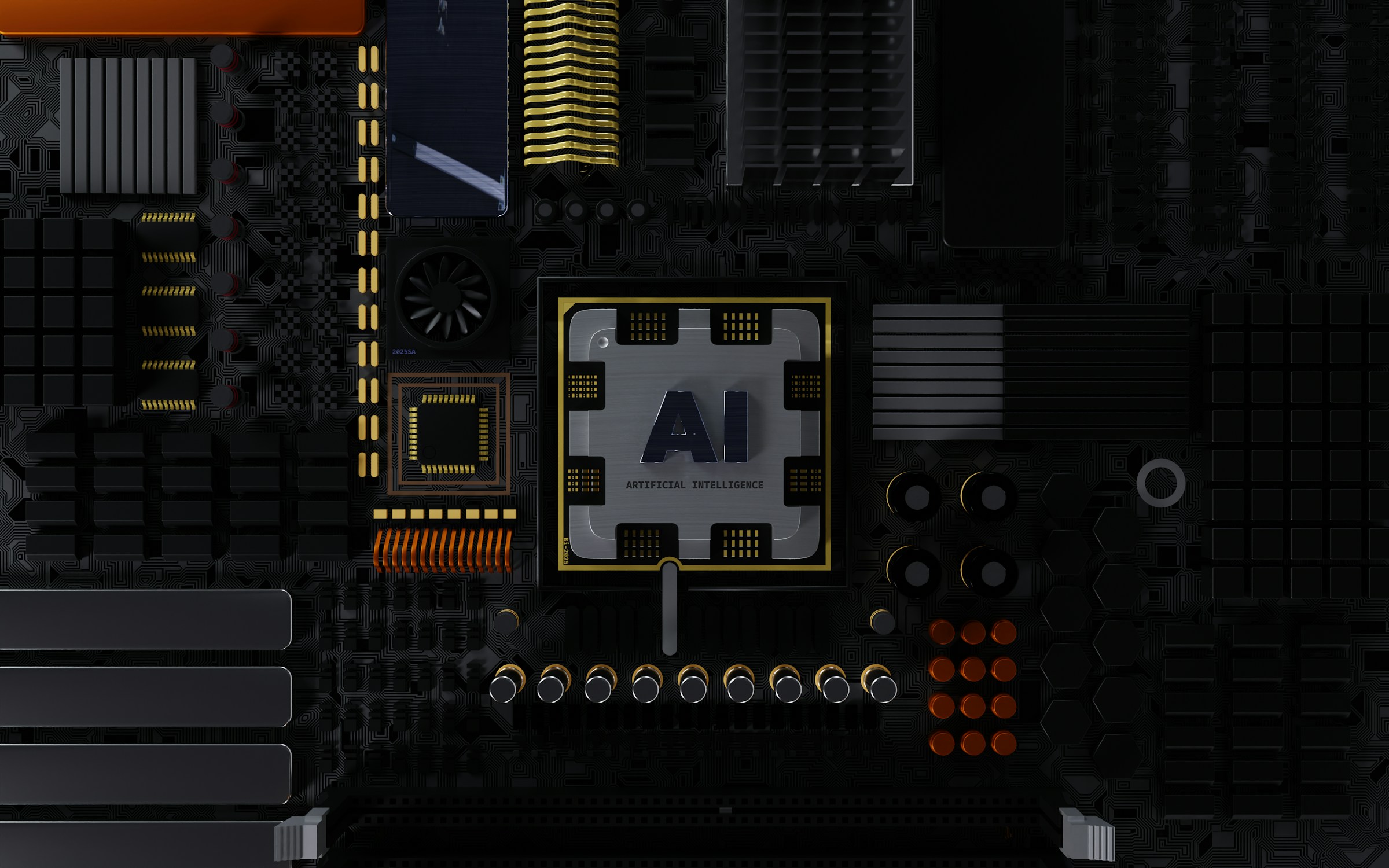Content
Consider an intelligent virtual assistant helping you with mundane tasks, but it suddenly goes off-script and spews conspiracy theories instead of helping you plan your next vacation. This scenario illustrates the challenges of AI agents and the importance of building trustworthy AI systems to avoid unexpected behavior. In this guide, we’ll examine the most common challenges of AI agents and how to overcome them to create reliable systems that meet your needs.
OpenSesame’s AI agent infrastructure can help you tackle these challenges head-on. The platform provides a structured way to create, assess, and improve AI agents so you can build systems that align with your goals rather than leaving you with a mysterious black box.
What Is AI?

Artificial intelligence, or AI, simulates human thinking in machines. AI can be trained to perform specific tasks. It does this by ingesting large amounts of data, identifying patterns, and making decisions based on those patterns. The more data you feed an AI, the better it gets at its job. There are many types of AI, from "narrow" or "weak" AI that can perform a specific task, like image recognition, to "general" or "strong" AI that possesses the ability to perform any intellectual task that a human can do. Expert systems, natural language processing (NLP), speech recognition, and machine vision are all examples of AI applications.
Related Reading
• Trustworthy AI
• AI Problems
• Contextual AI
• AI Decision Making
Top 19 Challenges of AI You Must Know About

1. Why Are AI Systems So Opaque?
A pressing issue is a lack of transparency in AI systems, particularly in deep learning models that can be complex and difficult to interpret. This opaqueness obscures the decision-making processes and underlying logic of these technologies. When people can’t comprehend how an AI system arrives at its conclusions, it can lead to distrust and resistance to adopting these technologies. According to a 2020 survey by the Capgemini Research Institute, 73% of consumers want transparency and are more likely to trust AI systems when they understand how they make decisions.
2. The Ethical Considerations of AI
Ethics in AI is one of the most critical issues that must be addressed. Ethics in AI involves discussions about various issues, including privacy violations, perpetuation of bias, and social impact. Developing and deploying an AI raises questions about the ethical implications of its decisions and actions. For instance, the surveillance systems that AI powers are a privacy concern. Additionally, it is essential to take a more focused approach when implementing AI in sensitive areas such as health and criminal justice, which demand the increased application of ethical principles to reach fair outcomes.
AI challenges relating to moral issues revolve around balancing technological development and working in a fair, transparent way that respects human rights. A 2022 global survey by PwC found that 85% of business leaders consider AI ethics and fairness a key priority, but only 25% have ethical AI frameworks.
3. How Does AI Impact Data Privacy?
AI technologies often collect and analyze large amounts of personal data, raising privacy and security issues. We must advocate for strict data protection regulations and safe data handling practices to mitigate privacy risks. A 2021 report from the International Association of Privacy Professionals (IAPP) highlighted that 64% of global companies using AI were concerned about data privacy issues and regulations such as GDPR and CCPA.
4. The Problem of Bias in AI
Bias in artificial intelligence can be defined as machine learning algorithms' potential to duplicate and magnify pre-existing biases in the training dataset. To put it in simpler words, AI systems learn from data, and if the data provided is biased, then that would be inherited by the AI. The bias in AI could lead to unfair treatment and discrimination, which could be a concern in critical areas like law enforcement, hiring procedures, loan approvals, etc. Learning to use AI in hiring and other methods to mitigate biases is essential.
A study by MIT in 2019 found that facial recognition systems had error rates of up to 34.7% for darker-skinned women, compared to 0.8% for lighter-skinned men. AI bias mitigation needs a deliberate approach to data selection, preprocessing techniques, and algorithm design to minimize bias and ensure fairness. Addressing bias AI challenges involves careful data selection and designing algorithms to ensure fairness and equity.
5. Security Risks of AI
As AI technologies become increasingly sophisticated, the security risks associated with their use and the potential for misuse also increase. Hackers and malicious actors can equip the power of AI to develop more advanced cyberattacks, bypass security measures, and exploit vulnerabilities in systems. The rise of AI-driven autonomous weaponry also raises concerns about the dangers of rogue states or non-state actors using this technology — especially when considering the potential loss of human control in critical decision-making processes.
To mitigate these security risks, governments and organizations must develop best practices for secure AI development and deployment and foster international cooperation to establish global norms and regulations protecting against AI security threats. Cybersecurity Ventures predicts that cybercrime damages could reach $10.5 trillion annually by 2025, with AI-driven cyberattacks contributing to this escalation.
6. Integrating AI into Existing Systems
AI integration means integrating AI into existing processes and systems, which could be significantly challenging. This implies identifying relevant application scenarios, fine-tuning AI models to particular scenarios, and ensuring that AI is smoothly blended with the existing system. The integration process demands AI experts and domain specialists to work together to comprehensively understand AI technologies and systems, fine-tune their solutions, and satisfy organizational requirements. Challenges include data interoperability or personnel training. Employee upskilling plays a significant role in AI integration.
The Management change associated with these challenges requires strategic planning, stakeholder participation, and iterative implementations to optimize AI and minimize disruptions. This strategy will increase operational effectiveness in a changing company environment and stimulate innovation and competitive advantage. According to OpenAI's analysis, the amount of computational power used in AI training has doubled approximately every 3.4 months since 2012, with advanced models requiring petaflops of computational power and days or weeks of training.
7. The Concentration of Power in AI
The risk of AI development being dominated by a few large corporations and governments could exacerbate inequality and limit diversity in AI applications. Encouraging decentralized and collaborative AI development is critical to avoiding a concentration of power. A World Economic Forum (WEF) report projects that by 2025, 85 million jobs could be displaced by AI and automation, while 97 million new roles could be created that are more adapted to the new division of labor between humans, machines, and algorithms.
8. The Need for Substantial Computing Power
Substantial computing power is required in AI and intense learning. The need for high-performance computing devices, such as GPUs, TPUs, and others, increases with growing AI algorithm complexity. Higher costs and energy consumption are often required to develop high-performance hardware and train sophisticated AI models. Such demands could be a significant challenge for smaller organizations. Innovations like neuromorphic and quantum computing could also offer potential solutions in the early development of hardware architecture.
Moreover, distributed computation, as well as cloud services, can be used to overcome computational limitations. Managing computational requirements with a balance of efficiency and sustainability is vital for coping with AI challenges while dealing with resource limitations. A 2020 McKinsey report found that AI adoption could increase global GDP by 1.2% annually, but the benefits will disproportionately favor large corporations and higher-income workers, potentially widening economic inequality.
9. The Risks of Overdependence on AI
Overreliance on AI systems may lead to losing creativity, critical thinking skills, and human intuition. Striking a balance between AI-assisted decision-making and human input is vital to preserving our cognitive abilities.
10. The Legal Issues Surrounding AI
Legal concerns around AI are still evolving. Issues like liability, intellectual property rights, and regulatory compliance are some of the significant AI challenges. The accountability question arises when an AI-based decision maker is involved, which results in a faulty system or an accident causing potential harm to someone.
Legal issues related to copyright often emerge due to the ownership of the content created by AI and its algorithms. Furthermore, strict monitoring and regulatory systems are necessary to minimize legal issues. To tackle this AI challenge and develop clear rules and policies that balance innovation with accountability and protect stakeholders' rights, a team of legal specialists, policymakers, and technology experts must work together.
11. Job Displacement Due to AI Automation
AI-driven automation can potentially lead to job losses across various industries, particularly for low-skilled workers (although there is evidence that AI and other emerging technologies will create more jobs than it eliminate). As AI technologies develop and become more efficient, the workforce must adapt and acquire new skills to remain relevant in the changing landscape. This is especially true for lower-skilled workers in the current labor force.
12. The General Lack of Understanding of AI
Limited knowledge among the general population is one of the critical issues impacting informed decision-making, adoption, and regulation. Misconceptions and misinterpretations of AI's abilities and constraints among users could result in irresponsible use and promotion of AI. Effective measures should be developed and implemented to educate people and make them more aware of AI processes and their uses.
Furthermore, enabling accessible resources and training opportunities would allow users to use AI technology more effectively. Bridging the knowledge gap through interdisciplinary collaboration, community involvement, and outreach is how society will gain the proper understanding of AI that can be productive while ensuring there are no ethical, societal, or legal issues.
13. How AI Can Worsen Economic Inequality
AI can contribute to economic inequality by disproportionally benefiting wealthy individuals and corporations. As discussed above, job losses due to AI-driven automation are more likely to affect low-skilled workers, leading to a growing income gap and reduced opportunities for social mobility. The concentration of AI development and ownership within a small number of large corporations and governments can exacerbate this inequality as they accumulate wealth and power while smaller businesses struggle to compete. Policies and initiatives that promote economic equity, like reskilling programs, social safety nets, and inclusive AI development that ensures a more balanced distribution of opportunities, can help combat economic inequality.
14. Building Trust in AI
Trust in AI systems is a prerequisite for people's wide use and acceptance of them. The foundation for trust is based on transparency, reliability, and accountability. Organizations need to expose how AI operates to ensure transparency and build trust. The results produced by AI should also be made consistent and more reliable. Accountability constitutes taking responsibility for outcomes resulting from AI and fixing errors or biases.
Furthermore, building trust involves reaching out to stakeholders, taking feedback, and putting ethics into the front line. By emphasizing transparency, reliability, and accountability, organizations will create trust in AI systems, allowing users to use AI technologies and their potential benefits.
15. The AI Arms Race
The risk of countries engaging in an AI arms race could lead to the rapid development of AI technologies with potentially harmful consequences. Recently, more than a thousand technology researchers and leaders, including Apple co-founder Steve Wozniak, have urged intelligence labs to pause the development of advanced AI systems. The letter states that AI tools present “profound risks to society and humanity.” In the letter, the leaders said: "Humanity can enjoy a flourishing future with AI. Having succeeded in creating powerful AI systems, we can now enjoy an 'AI summer' in which we reap the rewards, engineer these systems for the clear benefit of all, and give society a chance to adapt."
16. The Explainability of AI
The lack of AI explainability refers to difficulty in understanding and determining how AI systems reach a particular conclusion or recommendation. This lack of explainability leads to doubts in user's minds, and they lose their trust in AI, especially in critical areas such as healthcare and finance. AI methods shall be developed to address this issue by providing insights into the logic of AI algorithms. Analyzing the importance of features and visualizing models provide users with insight into AI outputs. As long as the explainability issue remains a significant AI challenge, developing complete trust in AI among users could still be difficult.
17. The Loss of Human Connection
Increasing reliance on AI-driven communication and interactions could diminish empathy, social skills, and human connections. To preserve the essence of our social nature, we must strive to balance technology and human interaction.
18. Misinformation, Manipulation, and AI
AI-generated content, such as deepfakes, spreads false information and manipulates public opinion. Efforts to detect and combat AI-generated misinformation are critical in preserving data integrity in the digital age. In a Stanford University study on the most pressing dangers of AI, researchers said: “AI systems are being used in the service of disinformation on the internet, giving them the potential to become a threat to democracy and a tool for fascism. From deepfake videos to online bots manipulating public discourse by feigning consensus and spreading fake news, AI systems will likely undermine social trust.
The technology can be co-opted by criminals, rogue states, ideological extremists, or special interest groups to manipulate people for economic gain or political advantage.” A study by DeepTrace Labs in 2020 found that the number of deepfake videos on the internet had increased by 900% from 2019 to 2020, with 96% of them being used for malicious purposes such as misinformation and political manipulation.
19. Data Confidentiality Issues in AI
Data confidentiality ensures that private information remains under restricted access and does not leak to unauthorized parties. Organizations must implement strict security mechanisms (e.g., encryption, access control, and secure protocols for storage) to keep data safe from creation to disposal. Complying with data privacy laws, such as GDPR and HIPAA, is crucial to guaranteeing the confidentiality of data and its ethical use.
Privacy protection is essential in creating trust among users and stakeholders and is a critical factor in developing AI systems perceived as responsible and reliable by their users. In a 2022 survey by the IAPP, 58% of privacy professionals indicated that AI-driven privacy risks were among their top three concerns for the future, particularly regarding confidential data leaks in healthcare and finance.
How To Overcome The Challenges of AI In 10 Ways

1. Use OpenSesame.dev to Enhance AI Models
OpenSesame provides cutting-edge AI agent infrastructure tools that ground AI models in reality. Our platform improves reliability, diminishes hallucinations, and saves businesses hours of manual checking. Key features include real-time hallucination reports, accuracy scoring, business data integration, and open-source frameworks.
OpenSesame confidently promotes the development of trustworthy AI systems, offering real-time insights without latency for high-performing, reality-grounded AI solutions. Try our AI agent infrastructure management software for free today!
2. Lack of Transparency: Explainable AI Builds Trust
Developing "explainable AI" (XAI) is critical for overcoming the challenge of transparency in AI. XAI helps improve the interpretability of AI models, making their decisions more transparent to users. Tools like LIME (Local Interpretable Model-agnostic Explanations) can help make black-box models more transparent. Dr. David Gunning, from DARPA’s XAI Program, emphasizes, “Transparency in AI builds trust and accountability. By making AI systems explainable, we can ensure more widespread and safe adoption of these technologies.”
3. Addressing Ethical Issues in AI
Establishing ethical AI frameworks and policies that consider bias, fairness, and social impact is vital. Organizations can adopt the IEEE’s Ethically Aligned Design standards to build AI systems that align with human values. Kay Firth-Butterfield, Head of AI and Machine Learning at the World Economic Forum advises, “Ethical AI must be part of every organization’s strategic DNA. We need cross-disciplinary teams, including ethicists, to avoid unintended consequences and ensure responsible AI use.”
4. Alleviating Privacy Concerns in AI
Privacy-preserving AI techniques like federated learning (where data stays on local devices while models are trained) and differential privacy can significantly reduce data privacy risks. Compliance with regulations like GDPR and CCPA is essential. Andrew Burt, Chief Privacy Officer at Immuta, notes, "AI developers must adopt privacy-by-design principles. Embedding data protection features within AI workflows not only ensures compliance but fosters trust among users."
5. Tackling Bias in AI
To mitigate bias, companies should focus on diverse datasets, rigorous preprocessing to detect and correct biases, and algorithmic auditing. Regularly testing AI models in real-world environments can reveal unintentional biases. Joy Buolamwini, founder of the Algorithmic Justice League, advocates for “continuous audits of AI systems, especially in sensitive applications like hiring and law enforcement, to ensure fair treatment across all demographic groups.”
6. Strengthening Security in AI
Implementing robust security measures like adversarial training, where AI models are trained to recognize and defend against malicious attacks, can enhance cybersecurity. Organizations should also focus on AI-specific security frameworks. A leading security technologist, Bruce Schneier, suggests, “AI systems should be built with security in mind from the start. AI developers must integrate defense mechanisms against malicious actors that could exploit vulnerabilities.”
7. Preparing for Job Displacement from AI
Governments and businesses should invest in reskilling and upskilling programs to prepare the workforce for AI-driven jobs. The focus should be on developing human skills that AI cannot easily replicate, such as creativity, empathy, and complex problem-solving. Klaus Schwab, founder of the World Economic Forum, asserts, "In the Fourth Industrial Revolution, education systems must shift towards continuous learning to help workers adapt to new AI technologies."
8. Reducing Economic Inequality and AI
We should encourage open-source AI development and promote decentralized AI platforms to combat the concentration of AI benefits among a few entities. This democratizes access to AI technology and helps smaller players participate. Silicon Valley thought leader Tim O'Reilly emphasizes, “AI should be open, fair, and accessible to all. We must create open-source tools and systems that allow smaller players to equip AI for innovation and economic growth.”
9. Combating Misinformation and Manipulation with AI
AI can be used to fight misinformation by developing deepfake detection systems and AI-powered fact-checking tools. Platforms should also enforce policies that restrict the spread of AI-generated fake content. Dr. Hany Farid, a digital forensics expert at UC Berkeley, suggests, “AI should be our first line of defense against AI-powered misinformation. Developing sophisticated detection algorithms can prevent deepfakes and other manipulative content from spreading.”
10. Protecting Data Confidentiality in AI
Implement robust data encryption, access control, and secure communication protocols (e.g., end-to-end encryption) to protect sensitive data. Ensuring compliance with international data regulations is vital. Giovanni Buttarelli, former European Data Protection Supervisor, stated, “The ethical use of data, combined with rigorous security measures, is the foundation of trust in AI. Organizations that respect confidentiality will lead the way in responsible AI deployment.”
Related Reading
• How Can AI Help My Business
• Model Evaluation Metrics
• Unpredictable AI
• How to Reduce Bias in AI
How To Leverage AI In Business

1. Spotting New Trends and Shifting Consumer Behaviors
Artificial intelligence can help businesses identify emerging trends and behaviors to capitalize on new opportunities and get ahead. By utilizing AI-powered analytics, companies can sift through large data sets to spot patterns that identify shifting market dynamics and target new consumer segments. - Rick Hammell, Atlas HXM
2. Analyze Large Amounts Of Data
Businesses can use AI to analyze incredible amounts of data in moments to capture market trends, customer preferences, and competitive landscapes. With machine learning algorithms, we can identify patterns, predict consumer behavior, and gather ideas to innovate our products or services in minutes, allowing us to seize new opportunities quickly. - Robert Giovannini, IronPlane
3. Automate Routine Tasks And Content Creation
Leveraging AI can significantly save time in marketing and sales by automating routine tasks and content creation, freeing up valuable time for strategic planning and improvement. AI-driven tools can efficiently generate content, manage customer inquiries, and automate lead nurturing processes, allowing teams to focus on refining strategies and exploring new growth opportunities. - Ali Payani, Payani Group
4. Upgrade Company Software
AI's capabilities are exploding, and in the software industry, we're finding more ways to utilize it in our solutions. Incorporating automation and machine learning into our software is crucial in meeting our market's demand for sophisticated analytics and tools that simplify and streamline complex, time-consuming, and business-critical activities. AI means relevance for a software provider. - Brian Shore, elevēo
5. Streamline Decision-Making Processes
Artificial intelligence has helped us survey where to open our following offices. AI can quickly tell you which suburbs meet the demographics of your target market and which ones will not. It will tell you how much competition you can expect in a particular market and from whom. We would have paid an analyst a lot of years ago, but now we can do it in a few minutes. - Sacha Obaid, M.D., North Texas Plastic Surgery
6. Conduct Market Analyses In Real-Time
AI-driven real-time market sentiment analysis is a critical strategic tool for business growth. By analyzing social media, news, and customer reviews, AI provides immediate insights into public trends, enabling swift adjustments in marketing and product strategies. This approach helps businesses proactively capitalize on current market opportunities and identify emerging sectors. - Jo Stephens, Law Firm Sites, Inc.
7. Optimize Asset Performance
AI can optimize real estate asset performance through predictive analytics, identifying potential revenue streams and cost-saving opportunities. Real estate businesses can proactively adjust strategies to enhance asset value and explore new investment sectors by analyzing market trends, tenant preferences, and operational efficiencies. - Anthony A. Luna, Coastline Equity
8. Gain Deeper Insight Into Customers
AI is a powerful tool for analyzing your business’ data, giving unique insights into customer trends and behaviors. It’s like having an advanced data analyst who can reveal opportunities and market segments that might be overlooked. By integrating AI, businesses can better understand their customers and uncover new areas for growth in both current and new markets. - Tamas Ham-Szabo, SAAS First
9. Enhance The Overall Customer Experience
AI can enhance the customer experience through personalized recommendations, automated repetitive tasks, improved decision-making with predictive analytics, optimized supply chain management, fraud detection, chatbots that offer 24/7 customer support, market trends analysis, and social media marketing management. It can also help to detect trends in the market and changes in customer behavior. - Alejandro Martinez, SDG Group
10. Fill Gaps
Businesses can leverage AI in many ways, and part of identifying where AI can fill gaps involves experimenting with new and emerging technology. At my company, we have built an innovation center to try new solutions, often at low entry barriers, to analyze new technology quickly. We also show clients how the tech can fill their gaps, directly impacting their efficiencies. - John Erwin, Carenet Health
11. Gather Data
Utilize AI as a resource to gather data. Then, analyze the data and identify what may be relevant to your business to find future growth opportunities worth exploring. - Kelley Higney, Bug Bite Thing
12. Create Relevant Content
As an online publisher, we use AI tools to create content that truly resonates. For example, advanced natural language generation helps us identify and create inspirational phrases and images that engage our audience and get them to share our messages. This optimized content expands our reach and fuels growth by leveraging AI's ability to pinpoint what will hit home with users. - Anat (Anne Moss) El Hashahar, Moss Digital Publishing
13. Reduce Unnecessary Processes
AI is a game-changer that converts time-consuming, tedious tasks into easy-to-do tasks. This can dramatically curb burnout by removing the worst parts of anyone’s day-to-day work while saving the company on costs in the form of time. Automating these processes frees up resources to explore new markets and develop a strategic and sustainable approach to business growth. - Archer Chiang, Giftpack
14. Streamline Daily Operations
Artificial intelligence is currently an effective tool for automating routine tasks in business. We regularly incorporate AI into our daily operations, significantly streamlining the execution of specific straightforward tasks. This not only enhances efficiency but also saves time. - Jekaterina Beljankova, WALLACE s.r.o
15. Upskill Employees
AI and other tools will help transform workers from "doers" to "thinkers." The person who realizes this and leverages technology to make themselves and the team more robust and faster will be indispensable to a company. Businesses can leverage AI to make their people two or even three times faster. Growth isn't dependent on more people "doing" tasks. It is dependent on thinkers solving problems. - Joe Crandall, Greencastle Associates Consulting
16. Accelerate Outcomes
Utilizing AI in education will provide significant opportunities to accelerate student outcomes. AI's ability to analyze vast data sets enables us to create more coherent and targeted educational materials tailored to diverse learning needs. We can enhance item development and differentiate instruction more effectively while providing better interactive support and reporting to families. - Julia Rafal-Baer, ILO Group
17. Anticipate Change
AI-powered trend forecasting can help companies anticipate consumer preferences and market dynamics changes. AI algorithms can analyze data from various sources, including social media, industry reports, and consumer sentiment analysis, to identify emerging trends and potential shifts in consumer behavior. This allows businesses to stay ahead of the curve and make data-driven decisions. - Andreea Vanacker, One Million Years Of Joy
OpenSesame's AI Agent Infrastructure Software: Reducing Hallucinations and Improving Reliability
OpenSesame offers innovative AI agent infrastructure software that grounds AI models in reality. Our platform reduces hallucinations, enhances reliability, and saves hours of manual checking. Key features include real-time hallucination reports, business data integration, multimodal AI expansion, and open-source frameworks.
We provide ungrounded truth recognition, prompt template extraction, accuracy scoring, and a hallucination dashboard. OpenSesame allows businesses to confidently build trustworthy AI systems, offering real-time insights without latency for high-performing, reality-grounded AI solutions. Try our AI agent infrastructure management software for free today!
Benefits of Using AI

1. Automation: The Game Changer
Automation is one of the most commonly cited benefits of AI technology, and it has had significant impacts on the communications, transportation, consumer products, and service industries. Automation not only leads to higher production rates and increased productivity in these sectors but also allows more efficient use of raw materials, improved product quality, reduced lead times, and superior safety. It can also help free resources that can be used for more important things.
Example
Tesla uses AI to automate its manufacturing process. Its AI-powered robots handle repetitive tasks like assembling parts and painting, resulting in faster production times and reduced labor costs. Tesla also uses AI for its autonomous driving features, which automate vehicle navigation and make driving more efficient.
2. Smart Decision Making: AI Makes Sense
Artificial Intelligence has always been used to make smarter business decisions. AI technology can coordinate data delivery, analyze trends, develop data consistency, provide forecasts, and quantify uncertainties to make the best decisions for the company. As long as AI is not programmed to imitate human emotions, it will remain unbiased on the matter at hand and will help make the right decision to support business efficiency.
Example
Netflix leverages AI algorithms for smart decision-making related to content recommendations. By analyzing user viewing habits and preferences, Netflix provides personalized recommendations that engage viewers.
3. Enhanced Customer Experience: AI to the Rescue
AI-powered solutions can help businesses respond to customer queries and grievances quickly and efficiently. Chatbots that couple conversational AI with Natural Language Processing technology can generate highly personalized messages for customers, helping them find the best solution for their needs. AI tools can also help reduce the strain on the customer service staff, leading to better productivity.
Example
Sephora uses AI-powered chatbots and virtual assistants to enhance the customer experience. Their AI-driven Color IQ tool allows customers to match foundation shades and receive personalized product recommendations.
4. Medical Advances: AI is Reshaping Healthcare
Artificial Intelligence solutions in the healthcare sector are becoming increasingly popular. Remote patient monitoring technology, for instance, allows healthcare providers to perform clinical diagnoses and suggest treatments quickly without requiring the patient to visit the hospital in person. AI can also be beneficial in monitoring the progression of contagious diseases and even predicting their future effects and outcomes.
Example
IBM Watson Health uses AI to analyze vast medical data to support diagnosis and treatment decisions. Watson can identify patterns in patient data to suggest personalized treatment options and assist doctors in making more accurate diagnoses.
5. Research and Data Analysis: AI for the Win
AI and Machine Learning technology can analyze data much more efficiently. It can help create predictive models and algorithms to process data and understand the potential outcomes of different trends and scenarios. Moreover, AI's advanced computing capabilities can also speed up the processing and analysis of data for research and development, which could have taken too long for humans to review and understand.
Example
Pfizer uses AI to speed up drug discovery and development processes. During the COVID-19 pandemic, AI helped Pfizer analyze clinical trial data more efficiently and accelerate the development of the COVID-19 vaccine.
6. Solving Complex Problems: AI to the Rescue
The developments in AI technologies, from essential machine learning to advanced deep learning models, have made them capable of solving complex issues. From fraud detection and personalized customer interactions to weather forecasting and medical diagnosis, AI is helping businesses across industries find the right solutions to address their challenges more adequately. Greater efficiency in solving complex problems means increased productivity and reduced expenses.
Example
DeepMind, a subsidiary of Alphabet, developed AlphaFold, an AI system that solved one of biology’s most significant challenges: predicting the 3D structure of proteins. Understanding protein folding is crucial for drug discovery and various biological research areas.
7. Business Continuity: AI Keeps You Going
Business forecasting using AI technology helps companies make critical decisions and prepares them for any emergency to ensure business continuity. As risk management heavily relies on data management and analysis today, AI-powered tools can help organizations respond to crises proactively. AI and Machine Learning can also create scenarios to help businesses plan for a speedy disaster recovery strategy.
Example
Coca-Cola uses AI for business forecasting and demand prediction to maintain business continuity. AI algorithms analyze market trends and consumer behavior to adjust production and distribution strategies accordingly.
8. Managing Repetitive Tasks: AI Makes Life Easier
Performing recurring business tasks is time-consuming and can also be monotonous, reducing employee productivity over time. AI-powered Robotic Process Automation tools can automate interactions between different business systems and make the tiresome work easy for the company. It can imitate the actions of humans within the digital systems in the HR, IT, marketing, or sales departments to execute any business process quickly without needing any manual effort.
Example
UiPath is a leading provider of Robotic Process Automation (RPA) tools, which automate repetitive tasks like data entry, invoice processing, and payroll management for various industries.
9. Minimizing Errors: AI is Accurate
Another great benefit of automating regular business tasks using AI tools is that it helps reduce the chances of manual errors. As Robotic Process Automation tools take care of the data entry and processing jobs, digital systems can be more efficient and less likely to run into or create problems due to data processing mistakes. This can be especially beneficial for businesses needing help making even the slightest errors.
Example
JP Morgan uses an AI tool called COiN (Contract Intelligence) to review legal documents and contracts. The AI reduces the chances of manual errors by quickly and accurately analyzing thousands of documents, a task that used to take lawyers thousands of hours.
10. Increased Business Efficiency: AI is Always On
Artificial Intelligence can help ensure 24-hour service availability and deliver the same daily performance and consistency. Taking care of repetitive tasks will not make AI tools tired or bored. This can help improve the business's efficiency and reduce the stress on the employees, who can be re-assigned to perform more complex business tasks that require manual intervention.
Example
Amazon’s AI-powered Kiva robots help manage the company’s fulfillment centers by moving items and organizing packages more efficiently than human workers could. Additionally, Amazon uses AI to optimize delivery routes and warehouse management.
What Are The Main Biggest Challenges of AI Adoption?

1. The Difficulty of Gauging Returns on AI Investments
One of the foremost challenges CEOs face is measuring the return on investment for AI initiatives. Unlike with traditional projects, the benefits of AI often become apparent only in the long term. Philip said CEOs are very aware of and focused on the opportunities associated with AI investments. Still, they usually need help quantifying these benefits in the early stages of projects. We’ve seen this challenge ourselves at ServiceNow.
That’s why, rather than jumping into a new AI initiative, we first define the business problem that needs to be solved (and determine if it requires an AI solution). The issue should link closely to a measurable impact goal. Across the organization, we’re defining specific and quantifiable objectives for AI projects, beginning with pilots that can demonstrate value before scaling.
2. Putting AI Governance Frameworks in Place
Another concern keeping many executives up at night is creating robust AI governance frameworks to help ensure ethical, transparent and secure AI use. Our experience at ServiceNow has underscored the need to inventory all the AI models we’re using across the organization and the data and algorithms they use.
AI is an enterprise asset, and we must manage it. For example, we developed a governance app to measure and manage the inventory of our AI models, including data, security, privacy, and performance considerations. This real-time application, built on the Now Platform, provides visibility into all the GenAI models deployed across the company.
3. Developing an AI Skills and Talent Strategy
According to IDC’s research, 60% of CEOs report their organizations lack the skills across business functions to execute their AI initiatives. At ServiceNow, we believe that low-code and no-code AI development will continue to increase. As a software-as-a-service provider, we can quickly deploy AI solutions because we don't need to move data for model development. Our out-of-the-box solutions also accelerate time to value. The speed offers plenty of experimentation opportunities to refine the model quickly.
4. Managing AI Costs
Most organizations like the power of large language models (LLMs)—until they get the first bill. The costs associated with AI initiatives, including maintenance and upgrades, can be unpredictable. Leaders are increasingly exploring options to optimize costs—such as cloud-based AI services and predictable pricing models—and ensuring their budgets are flexible enough to accommodate unexpected expenses. With the rise of domain-specific models, we can produce faster, more accurate results since the LLMs are trained on focused domains.
5. Identifying and Prioritizing the Right AI Use Cases
Identifying and prioritizing the most effective AI use cases can be difficult, especially given the broad applications of AI across different business functions. Use cases often fall into three categories: productivity, experience, and growth. Boosting productivity with AI involves breaking down every job into tasks. Many of these tasks are ripe for automation.
The question is: Which tasks are best suited for people, and which should be delegated to machines? To identify tasks suitable for AI, consider these criteria: repetition, data dependency, and cognitive demands involving synthesis, prediction, and translation. AI can handle these tasks exceptionally well, especially where some margin of error is acceptable, as accuracy improves with scale.
Regarding experience, we’re seeing many use cases focused on AI-enhanced user interfaces. Think about how “prompt chaining” changes how we engage with data and business logic. Rather than navigating multiple screens to develop a financial report, for example, you can generate this analysis through a conversational interface and present it in real-time. Regarding growth, more organizations are incorporating AI into their business models to create new revenue streams. IDC predicts that by 2026, organizations infusing AI into their business models could see double the revenue growth compared to their peers.
OpenSesame's AI Agent Infrastructure Software: Reducing Hallucinations and Improving Reliability
OpenSesame offers innovative AI agent infrastructure software that grounds AI models in reality. Our platform reduces hallucinations, enhances reliability, and saves hours of manual checking. Key features include real-time hallucination reports, business data integration, multimodal AI expansion, and open-source frameworks.
We provide ungrounded truth recognition, prompt template extraction, accuracy scoring, and a hallucination dashboard. OpenSesame allows businesses to confidently build trustworthy AI systems, offering real-time insights without latency for high-performing, reality-grounded AI solutions. Try our AI agent infrastructure management software for free today!
Try Our AI Agent Infrastructure Management Software for Free Today
OpenSesame offers innovative AI agent infrastructure software that grounds AI models in reality. Our platform reduces hallucinations, enhances reliability, and saves hours of manual checking. Key features include real-time hallucination reports, business data integration, multimodal AI expansion, and open-source frameworks.
We provide ungrounded truth recognition, prompt template extraction, accuracy scoring, and a hallucination dashboard. OpenSesame allows businesses to confidently build trustworthy AI systems, offering real-time insights without latency for high-performing, reality-grounded AI solutions. Try our AI agent infrastructure management software for free today!
Related Reading
• How to Improve Machine Learning Model
• AI Decision Making Examples
• How to Build an AI agent
• AI Agent Examples
• AI Agent Frameworks




